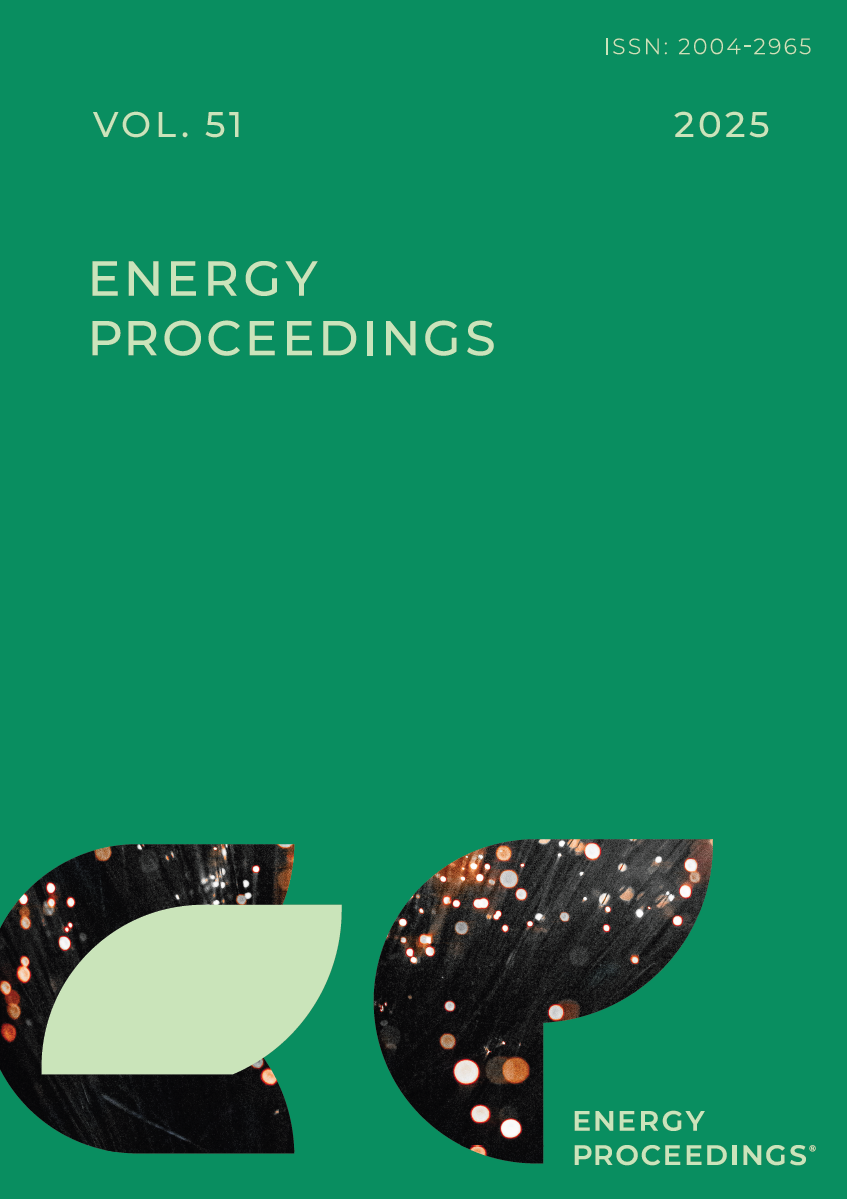
Volume 51
ISSN 2004-2965
Potential of Wall-Mounted Solar PV Panel in high-latitude areas- A case study in Swedish contexts
Tianqi Ruan, Wujun Wang, Björn Laumert
Download PDF
Article Preview
Numerical Simulation of PCM Melting Characteristics in a Rectangular Container with Non-Uniform Longitudinal Fins Added at the Bottom Region
Hua-Yang Liu, Jian-Peng Chen, Bei-Cheng Qu, You-Rong Li
Download PDF
Article Preview
Experimental investigation of the effects of transverse vibration on the supercritical CO2 heat transfer characteristics in a vertical/horizontal tube
Lin-Cheng Han, Jian Chen, Kun-Ru Wang, Hua Chen, Wen-Long Cheng
Download PDF
Article Preview
Study on the Mechanism of CO2 Injection in Fractured-vuggy Carbonate Gas Condensate Reservoirs
Fei Peng, Keliu Wu, Longjie Ma, Yun Zhang, Zongyu Li
Download PDF
Article Preview
Classification of Well Test Models and Characterization of Opening Pressure for Water-Induced Fractures
Jinbao Liu, Linsong Cheng, Pin Jia, Zheng Zhang, Jiangpeng Hu, Cong Peng
Download PDF
Article Preview
Optimizing the gasification characteristics of bio-oil distillation sludge by obtaining co-pyrolysis char with walnut shells
Yitao Huang, Xifeng Zhu, Chu Wang, Liang Wang
Download PDF
Article Preview
Cost-Effective Hydrogen Storage Materials: Utilizing Biogas Slurry to Synthesize High-Performance Hollow porous Carbon Spheres
Hang Yuan, Hongguang Zhu, Longlong Lei, Man Sun
Download PDF
Article Preview
Prediction of Daily Solar Irradiance for Solar Energy Approximation using LSTM Neural Network
Roslin Mahmud Joy, Md. Faruk Abdullah Al Sohan, Afroza Nahar, and Nusrat Jahan Anannya
Download PDF
Article Preview
SPXAI: Solar Power Generation with Explainable AI Technology
Rifat Al Mamun Rudro, Afroza Nahar, Md. Faruk Abdullah Al Sohan
Download PDF
Article Preview
Modeling of high-temperature PEM fuel cell incorporating the combined effects of assembly pressure and gas diffusion layer thickness
Hongxiang Zheng, Junwen Deng, Chuandong Li, Shuaishuai Yuan, Xinqi Yao, Feng Huang, Ruhang Zhang, Xinhai Yu, Shan-Tung Tu
Download PDF
Article Preview

Copyright ©
Energy Proceedings

